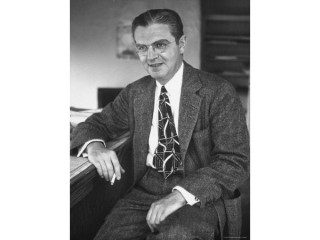
Henry Dreyfuss biography
Date of birth : 1904-03-02
Date of death : 1972-10-05
Birthplace : Brooklyn, New York, U.S.
Nationality : American
Category : Science and Technology
Last modified : 2011-09-30
Credited as : industrial designer, inventor, vacuum cleaner, Polaroid Land camera
0 votes so far
Henry Dreyfuss was, along with Raymond Loewy, Norman Bel Geddes, and Walter Dorwin Teague, a pioneer of American industrial design and specifically a leading exponent of streamlining. From about 1920, streamlined forms were developed for ships, airliners, and cars to improve their hydrodynamic and aerodynamic properties. Above and beyond this functional purpose, however, streamlined forms increasingly shaped 1930s household appliance design. In 1921 Henry Dreyfuss started serving an apprenticeship in the practice run by Norman Bel Geddes, who was only eleven years older than Dreyfuss.
During that period, Henry Dreyfuss mainly designed costumes and stage scenery for several New York theaters. In 1924 Norman Bel Geddes and Henry Dreyfuss designed the stage sets for the successful Broadway show "The Miracle". In 1929 Henry Dreyfuss opened a practice of his own, was a design consultant for Macy's department store, and worked increasingly as an industrial designer whose distinguished clientele included Bell Telephone, AT&T, American Airlines, Polaroid, Hoover, and others. In 1937 Henry Dreyfuss worked for John Deere, designing tractors and agricultural machinery. For Bell Telephone, Henry Dreyfuss designed the "Bell 300" telephone receiver, which stayed in fashion until the 1980s. Henry Dreyfuss collaborated with Lockheed on converting military planes for use in civil aviation. In 1951 Henry Dreyfuss designed the interior of the Super Constellation, subdividing its long fuselage into small areas that promoted passenger comfort and closeness. Dreyfuss also designed the interior of the Boeing 707.
A founding member of the American Society of Industrial Design, Henry Dreyfuss became in 1965 the first president of the recently founded Industrial Designers Society of America. After retiring, Henry Dreyfuss wrote two important books on anthropometry: "Designing for People" (1955) and "The Measure of Man" (1960).
Henry Dreyfuss and his wife committed suicide together in 1972.
















